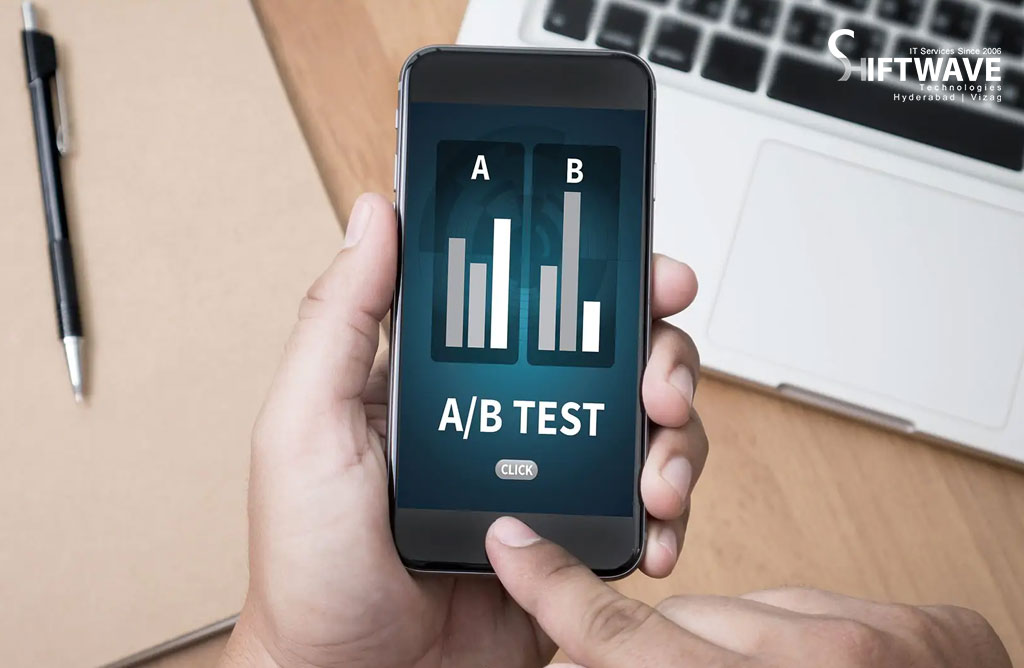Creating Impactful Ad Campaigns: A/B Testing
Home » Blog » Creating Impactful Ad Campaigns: A/B Testing

In the ever-evolving world of digital marketing, staying ahead of the competition is vital. One of the most effective tools at a digital marketer’s disposal is A/B testing. This technique allows you to experiment with different elements of your ad campaigns, helping you discover what works best for your audience. In this comprehensive guide, we will explore the world of A/B testing, why it’s essential, how to implement it in your ad campaigns, selecting the right metrics for testing, the benefits it offers, and some advanced hacks to take your A/B tests to the next level.
What is A/B Testing and Why does it Matter?
A/B testing, often referred to as split testing, is a method used to compare two versions of a webpage, email, or ad to determine which one performs better. It is a crucial tool in digital marketing that helps you make data-driven decisions and optimize your ad campaigns. But why does it matter?
Why A/B Testing Matters
- Data-Driven Decision Making: A/B testing eliminates guesswork and relies on empirical evidence. It allows you to make informed decisions based on user behavior and preferences.
- Optimize Conversions: A/B testing enables you to identify what resonates with your audience and what doesn’t. By optimizing your ad campaigns, you can increase conversion rates and ROI.
- Continuous Improvement: In the fast-paced world of digital marketing, what works today may not work tomorrow. A/B testing allows you to adapt to changing trends and audience preferences.
- Competitive Advantage: Marketers who embrace A/B testing have a competitive edge. By consistently improving their campaigns, they stay ahead of competitors.

How to Implement it in Ad Campaigns
Implementing A/B testing in your ad campaigns can be a game-changer. Here’s how to do it effectively:
Step 1: Define your Goals
Start by setting clear objectives for your A/B test. What do you want to achieve? Whether it’s increasing click-through rates, conversions, or engagement, having specific goals is essential.
Step 2: Identify the Element to Test
Determine which element of your ad campaign you want to test. It could be the ad copy, imagery, call-to-action, or even the landing page. Ensure that this element is significant in influencing the user’s decision.
Step 3: Create Variations
Once you’ve identified the element to test, create two (A and B) or more variations of it. For instance, if you’re testing ad copy, write different versions of the copy for A and B.
Step 4: Split your Audience
Divide your target audience into two or more groups. Each group will be exposed to a different variation of the element you’re testing. Ensure that the groups are similar in size and demographics to get reliable results.
Step 5: Run the Test
Launch your ad campaign, with each group seeing a different variation. It’s crucial to run the test simultaneously to ensure that external factors don’t skew the results.

Step 6: Monitor and Analyze
Monitor the performance of each variation closely. Analyze the data to determine which version is outperforming the others. You can use tools like Google Analytics or platforms like Facebook Ads Manager to track the results.
Step 7: Implement Changes
Based on the test results, implement the changes to your ad campaign. The winning variation becomes the new standard, and you can further refine it in subsequent tests.
How to Select Metrics for Testing
Choosing the right metrics to test is critical for the success of your A/B testing. The metrics you select should align with your campaign goals. Here are some common metrics to consider:
1. Click-Through Rate (CTR)
CTR measures the effectiveness of your ad in encouraging users to click through to your landing page. It’s a fundamental metric for ad campaigns and can reveal the impact of changes in ad copy, imagery, or call-to-action buttons.
2. Conversion Rate
Conversion rate measures the percentage of users who take a desired action, such as making a purchase, signing up, or downloading a resource. A/B testing can help identify which elements of your ad contribute to higher conversion rates.
3. Bounce Rate
Bounce rate reflects the percentage of visitors who navigate away from your landing page without taking any action. A high bounce rate may indicate that your ad or landing page isn’t resonating with your target audience.
4. Engagement Metrics
Depending on your ad format and platform, engagement metrics like likes, shares, and comments can be crucial. Testing variations of your ad can help you understand what content is more engaging to your audience.

5. Cost-Per-Click (CPC) and Return on Ad Spend (ROAS)
For paid advertising, monitoring CPC and ROAS is essential. A/B testing can help you optimize your ad campaigns to reduce costs and increase revenue.
Benefits of A/B Testing
A/B testing offers a multitude of benefits for digital marketing campaigns. Let’s explore some of the most prominent advantages:
1. Improved Conversion Rates
A/B testing allows you to fine-tune your ad campaigns to maximize conversions. By continuously testing and optimizing, you can significantly boost your conversion rates, ultimately increasing your ROI.
2. Enhanced User Experience
When you experiment with different ad elements, you also enhance the overall user experience. Ads that are more relevant and engaging are more likely to resonate with your audience, leading to increased customer satisfaction.
3. Better ROI
By improving conversion rates and reducing ad spend on underperforming elements, you can achieve a better return on investment. A/B testing helps you allocate your budget more effectively.
4. Data-Driven Decision Making
A/B testing eliminates guesswork. You make decisions based on data, ensuring that your marketing efforts are aligned with what your audience responds to best.
5. Continuous Optimization
Digital marketing is dynamic, and what works today might not work tomorrow. A/B testing provides a framework for continuous optimization, allowing you to adapt to changing trends and audience preferences.
6. Reduced Risk
By testing small changes before making significant investments in your ad campaigns, you mitigate the risk of implementing strategies that may not yield the desired results.

Hacks to Level Up your A/B Tests
To take your A/B testing to the next level, consider implementing these advanced strategies:
1. Multivariate Testing
Multivariate testing involves testing multiple variations of multiple elements simultaneously. It’s a more complex form of A/B testing that can provide deeper insights into user preferences.
2. Personalization
Personalize your ad campaigns based on user behavior, demographics, and preferences. Use A/B testing to discover the most effective personalization strategies.
3. Segmentation
Segment your audience and conduct A/B tests for each segment. This allows you to tailor your ad campaigns to specific user groups, increasing relevance and engagement.
4. Time-Based Testing
Test different ad variations at various times of the day or week. This can help you identify the optimal times for running your ads for maximum impact.
5. Ad Positioning
Experiment with the placement of your ads on different platforms. Test whether top-of-page or bottom-of-page ads perform better and adjust your strategy accordingly.
6. Use Heatmaps and Session Recordings
Incorporate heatmaps and session recordings to gain deeper insights into user behavior. These tools can help you understand how users interact with your ads and identify areas for improvement.
In conclusion, A/B testing is an indispensable tool for digital marketing success. By systematically testing and optimizing your ad campaigns, you can enhance conversion rates, improve user experience, and ultimately achieve a better ROI. To stay competitive in the ever-evolving digital landscape, harness the power of A/B testing and incorporate advanced strategies to fine-tune your campaigns. With the right approach and continuous effort, your digital marketing campaigns can achieve remarkable results.




